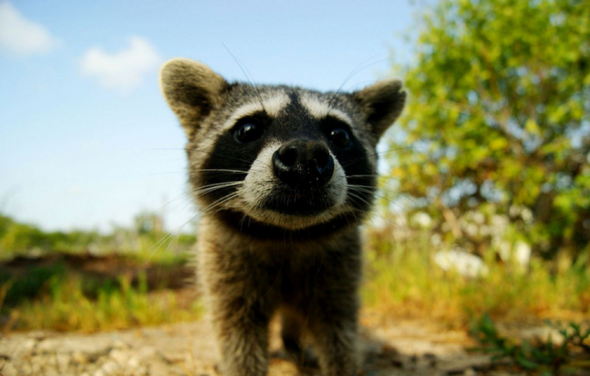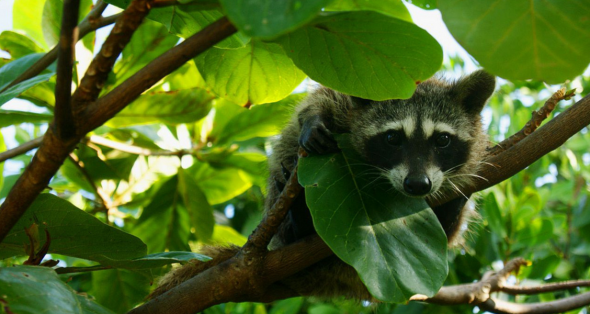Endangered Species Monday - Procyon pygmaeus
Endangered Species Monday - Procyon pygmaeus
This Monday’s endangered species article I write about a species that I have honestly never even heard of or had the pleasure of meeting. Listed as critically endangered, the species is commonly known as the Pygmy Raccoon or scientifically known as Procyon pygmaeus. (Image: Pygmy Raccoon)
Identified back in 1901 by Dr Clinton Hart Merriam (December 5, 1855 – March 19, 1942), Dr Merriam was an American zoologist, ornithologist, entomologist, ethnographer, and naturalist. Known as “Hart” to his friends, Merriam was born in New York City in 1855. His father, Clinton Levi Merriam, was a U.S. congressman.
Dr Merriam studied biology and anatomy at Yale University and obtained an M.D. from the School of Physicians and Surgeons at Columbia University in 1879. He taught for a while at Harvard University. Dr Merriam died in Berkeley, California in 1942. I have followed quite a lot of work relating back to Dr Merriam and must say Dr Merriam was one of very few experts of his type within the field of animal studies as we know it.
From 1996 the Pygmy Raccoon that’s known to the locals as the “Cozumel Raccoon” was listed as endangered back in 1996. Endemic to Mexico, Pygmy Raccoon’s are only known to inhabit the Cozumel region off the coast of the Yucatan Peninsula, Mexico, hence the carnivores name - “Cozumel Raccoon”.
Recent census counts taking into consideration juveniles gives us an (estimated) population at a depressingly two hundred and fifty mature individuals. However fifty nine per cent of the population actually corresponds to mature individuals which is somewhat concerning, especially when we really need more younger juveniles to continue the gene pool and to ensure that overall protection of the species is to a degree somewhat safe should an outbreak of disease occur.
Taking all data - past - and - present census counts, NEAR exact population size of juveniles we’re still not looking at a high number of individuals however can state that overall population sizes are 192-567 individuals. Due to low population densities, introduction of new species onto the island and the effects of mega-hurricanes this provides environmental scientists justification to place the species at (critically endangered level/criteria).
Due to continuing decline of population sizes with regards to increasingly destructive hurricanes, introduction of new species onto the island, extent of occurrence being in the region of some 500km2, less than five locations the species is known to inhabit on the island the Pygmy Raccoon thus meets the criteria for (endangered listing). Overall and taking both reports into account the species qualifies for critically endangered listing.
Exact location; Cozumel Island (478 km2) off the coast of the Yucatan Peninsula, Mexico.
Image: Mexico - Pygmy Raccoon.
Back in 2004 a further census was undertaken by Mr McFadden that estimated a near total of some 954 mature individuals (including juveniles). However due to some pretty intense hurricanes and new taxa introduced to the island species populations are still taking a pretty fast downward spiral of which its populations are still noted as (declining).
Due to the species being severely impacted by hurricanes and already depressed populations from a variety of human threats make it increasingly difficult for populations to recover following natural disasters it quite likely were going to witness extinctions occurring very soon. After major hurricanes, the density of Pygmy Raccoon’s can decline at a particular site by as much as 60% and the proportion of juveniles in the population can diminish significantly. The impact of hurricanes may vary among regions or vegetation types on the island.
The species is not legally protected and there are no protected areas on Cozumel Island. Proposed conservation measures include protecting areas inhabited by this species, establishing captive breeding programs, and controlling introduced species. However even with these protective measures in place - we can already state local NGO’s and zoological gardens are expecting the species to be pushed into extinction within the wild due to the fact captive breeding programs are being thought up.
Relatively little is known about the group size of the Raccoon’s. They are primarily nocturnal and solitary animals, but may sometimes form family groups possibly consisting of the mother and cubs. The Raccoon’s live in densities of about 17-27 individuals per km2., and inhabit home ranges of around 67 hectares (170 acres) on average. However, individuals do not appear to defend territories to any great extent, and their close relative, the common raccoon, can exist at very high densities when food is abundant. Although there have been no detailed studies of their reproductive habits, females seem to give birth primarily between November and January, possibly with a second litter during the summer months.
Threats
While legally protected within Mexico threats are still increasing that do look set to push the species into complete wild extinction.
Cozumel Island has been substantially developed for tourism. Cozumel is still relatively well-conserved, with close to 90% of the island covered by natural vegetation, but the situation is deteriorating rapidly. The interior of the island is less developed, but Raccoon’s are rare or absent there. There is only a very small area of prime raccoon habitat and this is on the coast where most of the tourist development is taking place.
The expansion and widening of the road system is fragmenting the vegetation of the island in at least three areas. The widening of roads is potentially increasing their barrier effect and exacerbating their impact on the conservation of Pygmy Raccoon’s and other native species.
Most cases of Pygmy Raccoon mortality documented since 2001 have been the result of animals being run over by cars on the island’s highways. Alien invasive predators, such as Boa constrictor, as well as domestic and feral dogs, may have an important impact on the Pygmy Raccoon population and it is confirmed that feral dogs predate on them.
Additionally, introduced carnivores to the island could easily become a source of parasites and pathogens that could potentially affect negatively Pygmy Raccoon populations. The introduction of congeners from the mainland (P. lotor), usually for pets, is a risk of genetic introgression and a potential source of parasites and pathogens.
Hurricanes are the main natural threat recognized for the Cozumel biota. In the case of the Pygmy Raccoon, hurricanes cause drastic population decline, reduction in the proportion of juveniles, and cause injury and facilitate pathological change. The frequency, magnitude and duration of hurricanes in the Caribbean Basin is increasing (CITA), so they are an issue of major concern as there may be a synergistic effect with anthropogenic disturbance.
Hunting and collection of Pygmy Raccoons as pets is currently not an important threat.
Thank you for reading.
Dr. J.C Depre
Environmental and Botanical Scientist. CEO




